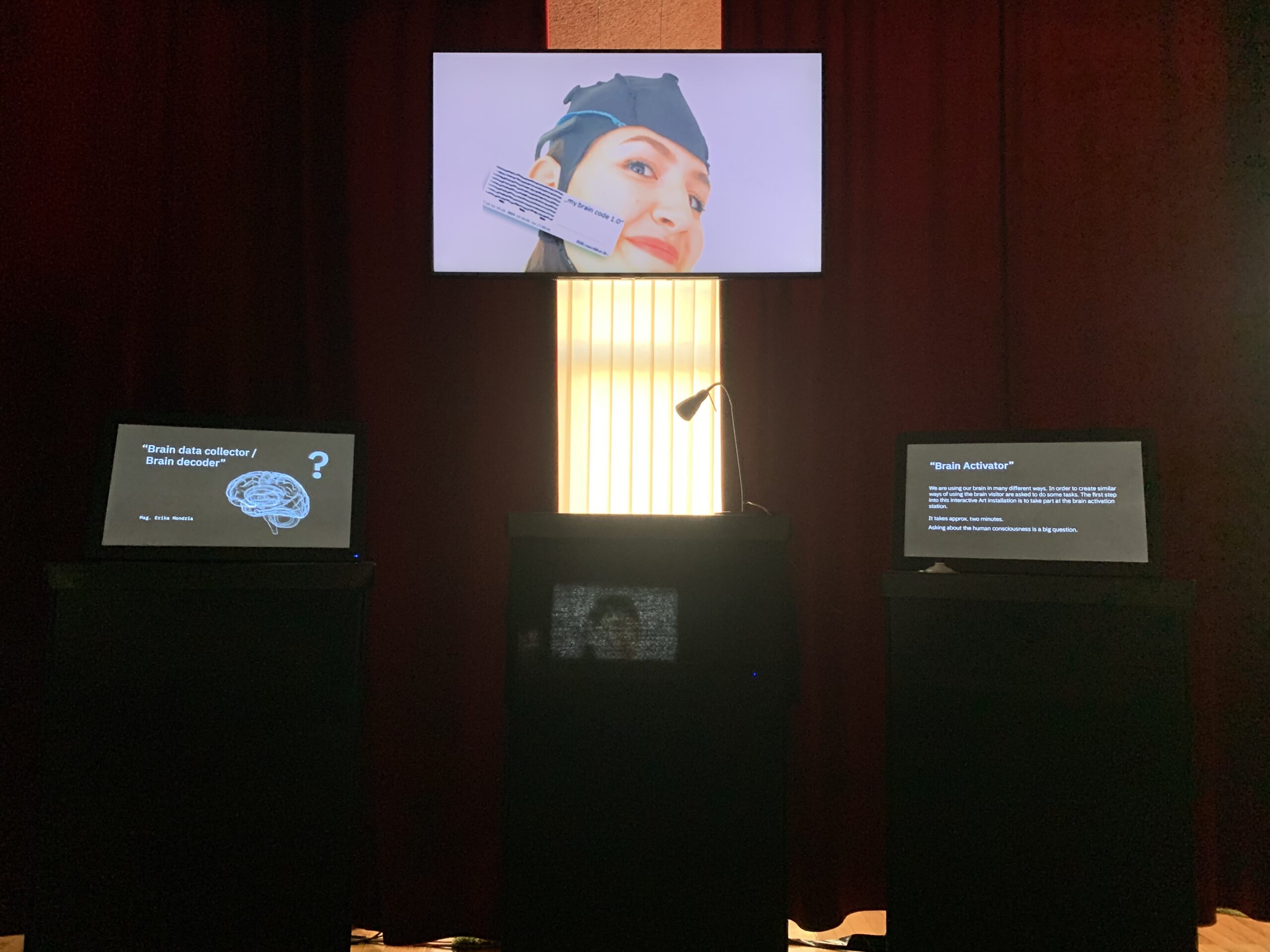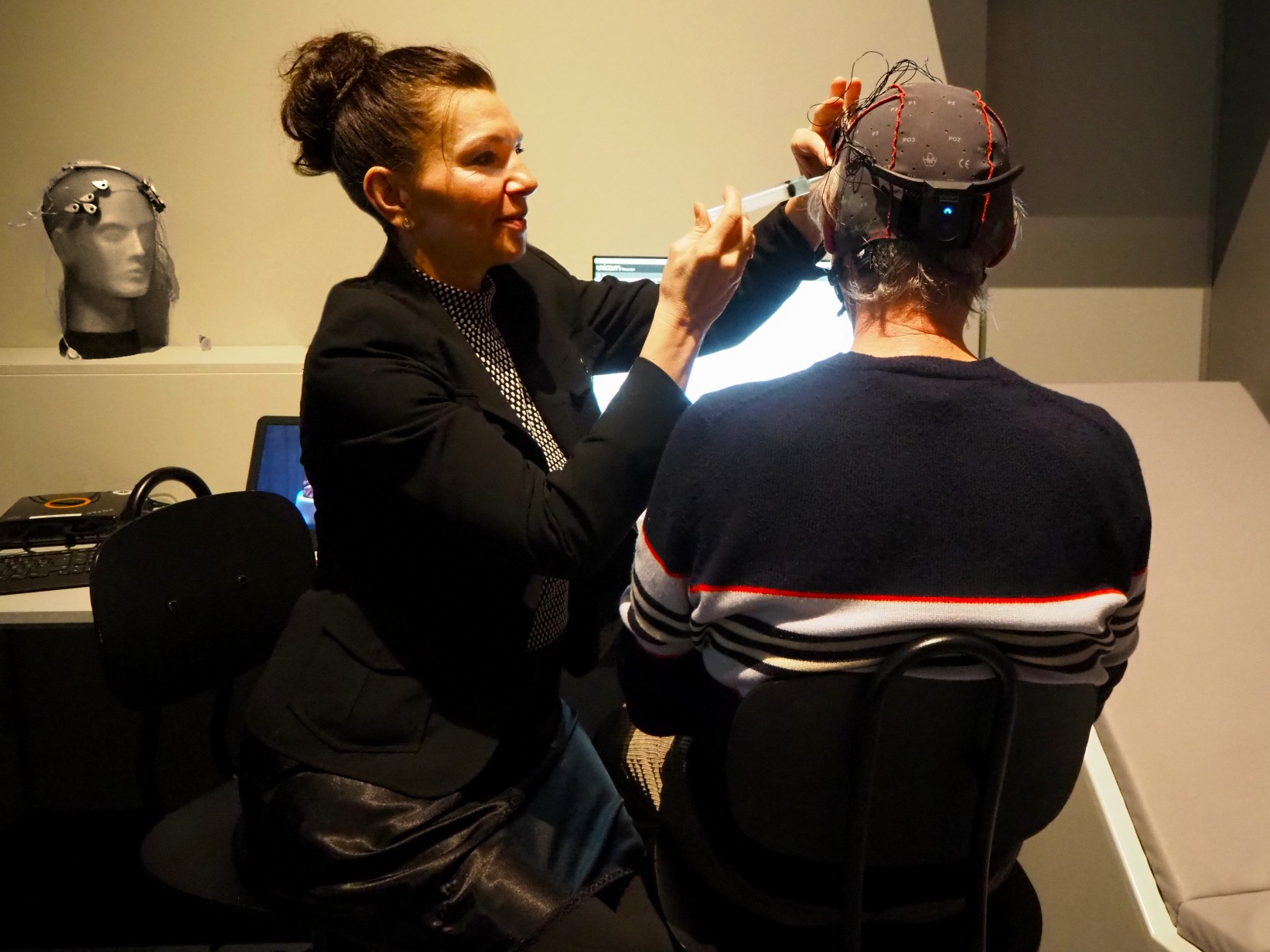
Erika Mondria
Neuro-Tech Artist
PhD researcher Erika Mondria investigates the use of biometric technology on humans and creates transformational narratives of the body’s intangible agency. She develops neuro-interaction methods based on mental research, neuroscience, art and cultural studies. Her focus is always guided by the question:” What does it mean to BE a body ?” The interactive installation ARTéFACT shows how far bioelectrical signals can reach. In installations such as “DER WENDEPUNKT”, the capacity of technologies to unravel the human mind is explored from new perspectives.
Human brain activity becomes tangible and tactile in her participatory art scenarios through digital body augmentation, telekinesis or cognitive neuroimaging. This invites the audience to reflect on the authorship, scope and capacity of human mental activity. It poses questions such as: “Is your mental activity private? Can you adjust and influence the range of your own bodily oscillations?”
The magic of the invisible Human-Computer Interaction in Art
Art can have an inspiring, arousing or calming effect, from euphoria to dark visceral reactions, people can be touched by art. Conversely, when people touch the art object or interact with the art scenario, they inevitably become a performative part of the artwork. New technologies make it possible to penetrate even deeper into the human being, directly into the human microvolt fireworks of the mental space. What if these microvolt fireworks can touch and shape a piece of Art?
The human mind constantly evokes measurable neuronal fireworks called bioelectric signals or bioelectric oscillations. Every human is sending and receiving bioelectrical signals to the surrounding, this fundamental circumstance creates a great field and potential for Human-Computer Interaction. Getting in touch with this internal inner microvolt fireworks (non-invasively) is the first challenge of developing a Neuro- interactive Artwork. It requires precise positioning and attachment of the sensors on the human scalp, and a minimum of expertise in handling neuro-hardware.

